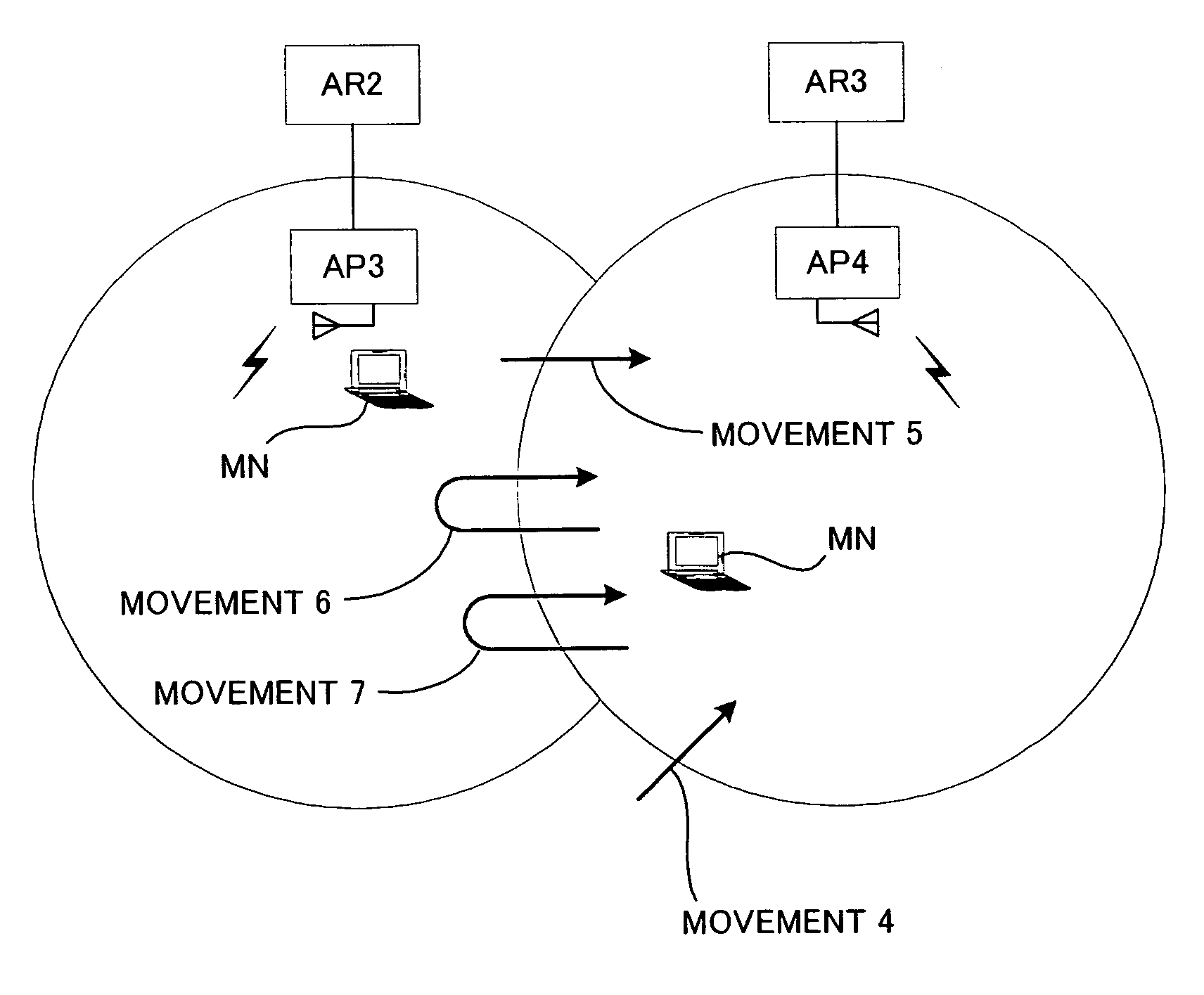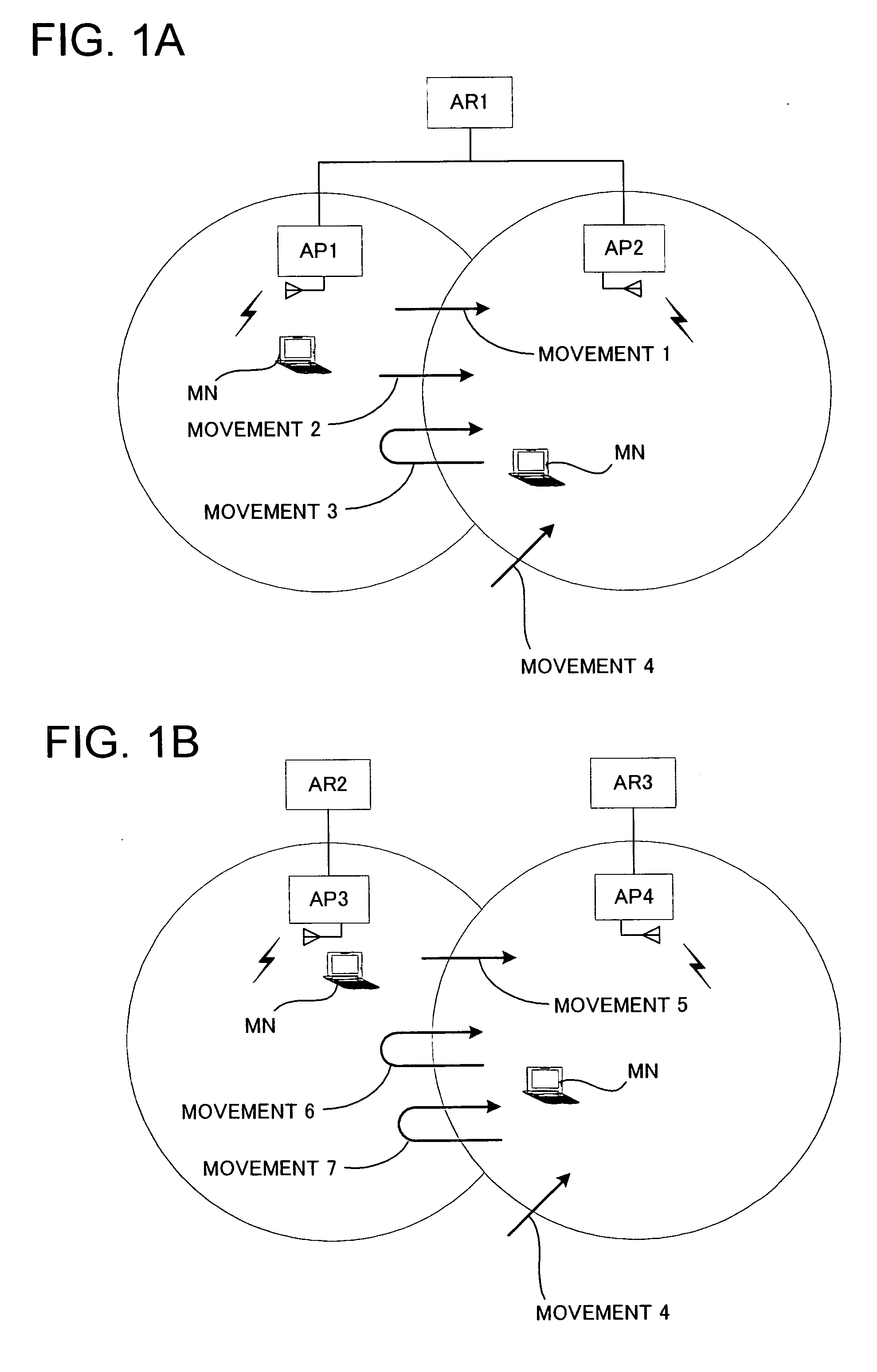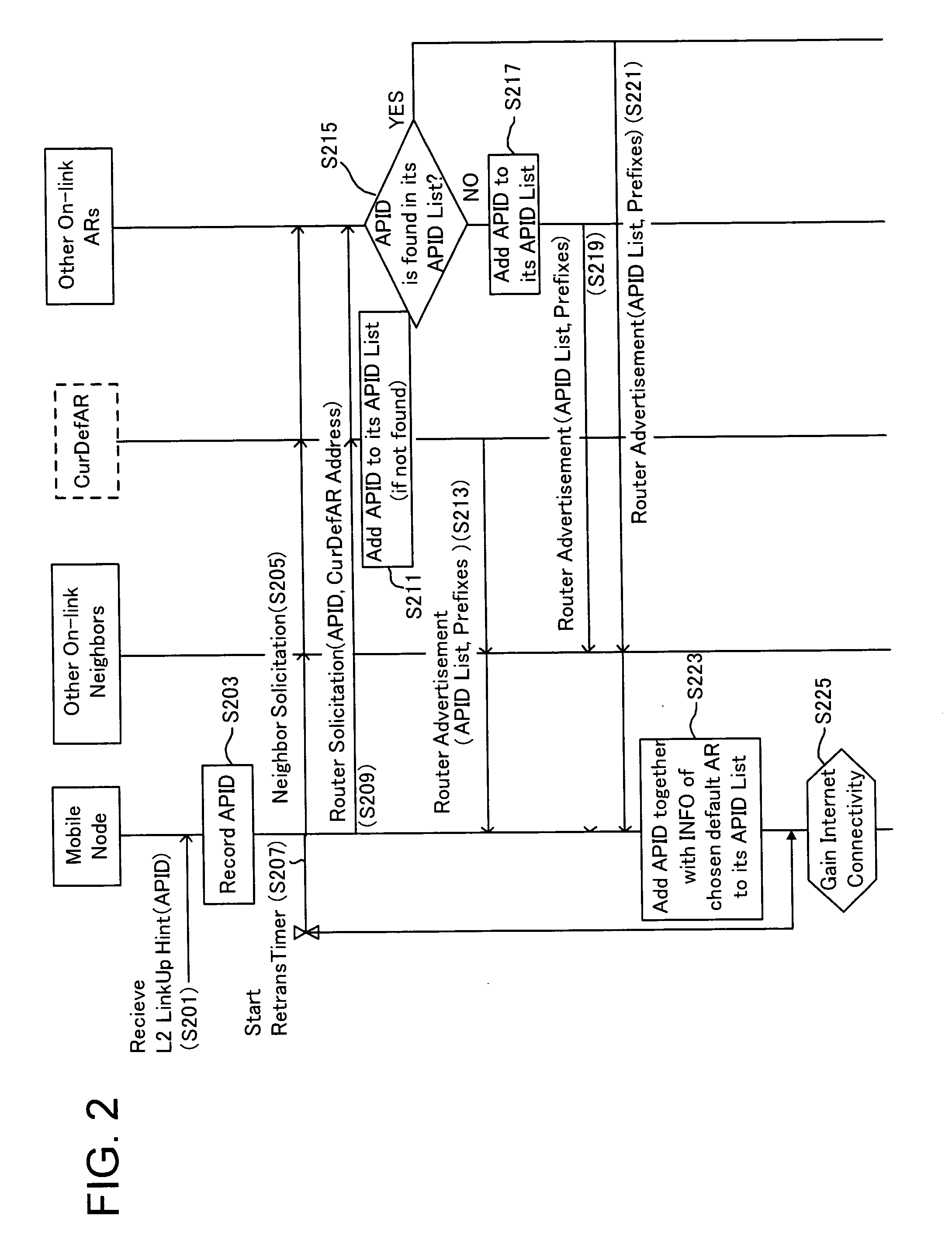Method and System for Detecting Network Connection in Ipv6 Radio Access Network
a radio access network and network connection technology, applied in the field of method and system for detecting network connection in ipv6 radio access network, can solve the problems of unfavorable service continuity of ongoing sessions, excessive multicast traffic, and latency spent in normal ip address (ipv6) auto-configuration procedures, so as to reduce signaling volume, save storage, and accelerate network attachment detection
- Summary
- Abstract
- Description
- Claims
- Application Information
AI Technical Summary
Benefits of technology
Problems solved by technology
Method used
Image
Examples
Embodiment Construction
[0030] Description will be given below on the embodiment of the present invention referring to the drawings. FIGS. 1A and 1B illustrate situations respectively, where AP1 and AP2 are on the same link of a single-link wireless access network, whereas AP3 and AP4 are on different links of a multiple-link wireless access network. Hereinafter, the main movements are classified into the followings.
[0031]“Movement 1” (see FIG. 1A): The first visit to an unknown AP on the same link. A MN attaches to AP2 for the very first time. The APID of AP2 is not found in its APID Cache. AR1 is the MN's CurDefAR.
[0032]“Movement 2” (see FIG. 1A): The first visit to a known AP on the same link. A MN attaches to AP2 for the very first time. The APID of AP2 is found in its APID Cache, which may be because the MN has received an APID List including the APID of AP2 before the movement. AR1 is the MN's CurDefAR.
[0033]“Movement 3” (see FIG. 1A): The subsequent visit to an AP on the same link. A MN switched ...
PUM
 Login to View More
Login to View More Abstract
Description
Claims
Application Information
 Login to View More
Login to View More - R&D
- Intellectual Property
- Life Sciences
- Materials
- Tech Scout
- Unparalleled Data Quality
- Higher Quality Content
- 60% Fewer Hallucinations
Browse by: Latest US Patents, China's latest patents, Technical Efficacy Thesaurus, Application Domain, Technology Topic, Popular Technical Reports.
© 2025 PatSnap. All rights reserved.Legal|Privacy policy|Modern Slavery Act Transparency Statement|Sitemap|About US| Contact US: help@patsnap.com



